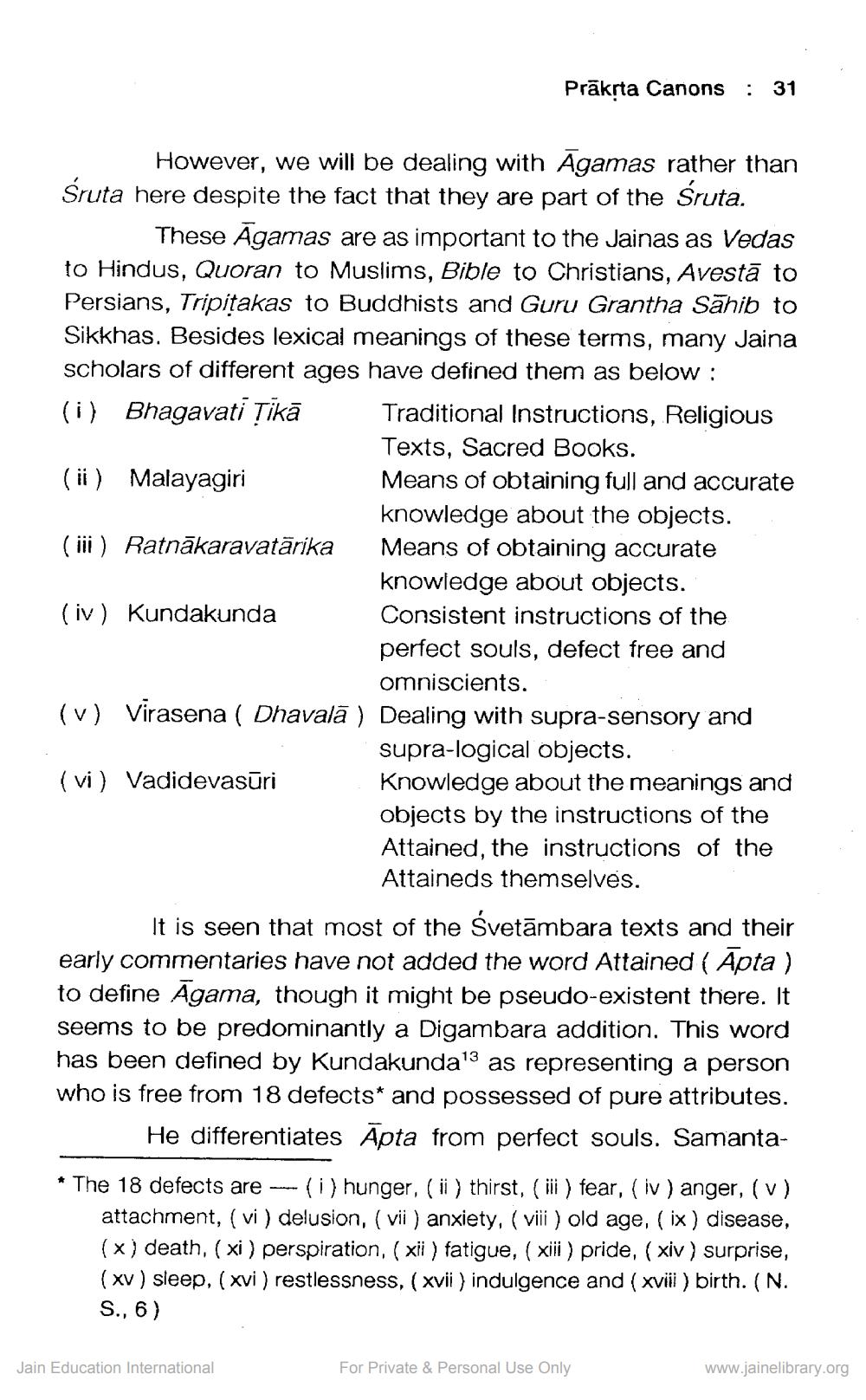________________
Prākrta Canons : 31
However, we will be dealing with Agamas rather than Śruta here despite the fact that they are part of the śruta.
These Agamas are as important to the Jainas as Vedas to Hindus, Quoran to Muslims, Bible to Christians, Avestā to Persians, Tripitakas to Buddhists and Guru Grantha Sāhib to Sikkhas. Besides lexical meanings of these terms, many Jaina scholars of different ages have defined them as below: (i) Bhagavati Tikā Traditional Instructions, Religious
Texts, Sacred Books. (ii) Malayagiri
Means of obtaining full and accurate
knowledge about the objects. (iii) Ratnākaravatārika Means of obtaining accurate
knowledge about objects. (iv) Kundakunda Consistent instructions of the
perfect souls, defect free and
omniscients. (v) Virasena ( Dhavalā ) Dealing with supra-sensory and
supra-logical objects. (vi) Vadidevasūri Knowledge about the meanings and
objects by the instructions of the Attained, the instructions of the
Attaineds themselves. It is seen that most of the Svetāmbara texts and their early commentaries have not added the word Attained ( Apta ) to define Agama, though it might be pseudo-existent there. It seems to be predominantly a Digambara addition. This word has been defined by Kundakunda 13 as representing a person who is free from 18 defects* and possessed of pure attributes.
He differentiates Āpta from perfect souls. Samanta* The 18 defects are --- (i) hunger, (ii) thirst, (iii) fear, (iv) anger, (v)
attachment, ( vi ) delusion, (vii) anxiety, ( vili ) old age, (ix) disease, (x) death, (xi) perspiration, (xii) fatigue, ( xii) pride, (xiv) surprise, (xv) sleep, ( xvi) restlessness, ( xvii) indulgence and (xviii) birth. (N. S., 6)
Jain Education International
For Private & Personal Use Only
www.jainelibrary.org




